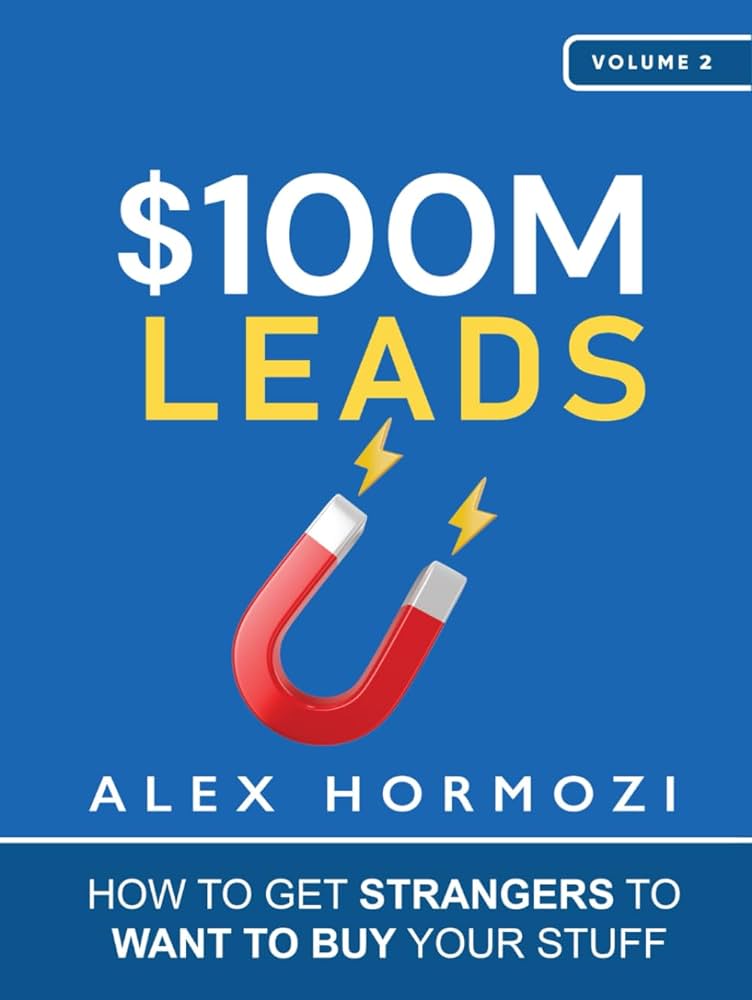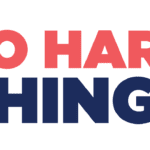In $100M Leads: How to Get Strangers To Want To Buy Your Stuff, the founder of Acquisition.com shares the playbooks that changed his business and life forever. He chronicles the journey in lead generation and how he went from sleeping on my gym floor to owning a portfolio of companies that generate $200,000,000 per year in a decade. His first book, $100M Offers: How To Make Offers So Good People Feel Stupid Saying No, answers the question “What should I sell?” while $100M Leads is about getting strangers to show interest in the stuff you sell.
When money meets experience… the money gets the experience, and the experience gets the money.
To make more money, you’ve gotta grow your business. You can only grow your business in two ways: 1) Get more customers and 2) Make them worth more. You get more customers by getting: 1) More Leads 2) Better Leads 3) Cheaper Leads 4) Reliably (think ‘from lots of places’).
Engaged Leads
A lead is a person you can contact. That’s all. If you bought a list of emails, those are leads. If you get contact information from a website or database, those are leads. The numbers in your phone are leads. People on the street are leads. If you can contact them, they are leads.
Engaged leads: people who *show* interest in the stuff you sell. If someone gives their contact information on a website, that is an engaged lead. If someone follows you on social media and you can contact them, that is an engaged lead. If people reply to your email campaign, they are engaged leads. The leads showing interest are the leads that matter.
Engaged leads are the true output of advertising.
Lead Magnet
Offers are what you promise to give in exchange for something of value. Often, a business promises to give its product or service in exchange for money. This is a core offer. If you advertise your core offer, then you go straight for the sale–the direct path to money. Advertising your core offer might be all you need to get leads to engage.
A lead magnet is a complete solution to a narrow problem. It’s typically a lower-cost or free offer to see who is interested in your stuff. And, once solved, it reveals another problem solved by your core offer. This is important because leads interested in lower-cost or free offers now are more likely to buy a related higher-cost offer later.
Get Leads: The Core Four Advertising Methods.
We get engaged leads by letting people know about our stuff. And there are two types of people we let know: people who know us and people who don’t. And there are two paths of letting them know about it: one-to-one and one-to-many. Those combine into the four basic ways one person can let other people know about anything.
Two Types of Audiences: Warm and Cold
- Warm audiences are people who gave you permission to contact them. Think “people who know you” – aka – friends, family, followers, current customers, previous customers, contacts, etc
- Cold audiences are people who have not given you permission to contact them. Think “strangers” – aka – other peoples’ audiences: buying contact lists, making contact lists, paying platforms for access, etc.
Two Ways To Communicate: One to One (Private), One to Many (Public)
Private communication is when only one person gets a message at a time. Think “phone call” or “email.” If you announce something publicly, many people can get it at the same time. Think “social media posts” or “billboards” or “podcasts.”
A-C-A framework:
- Acknowledge what they said. Restate it in your own words. This shows active listening.
- Compliment them on whatever they tell you. Tie it to a positive character trait if you can.
- Ask another question. Lead the conversation in whatever direction you want. In this case, to a topic closer to your offer. Examples: Therapy/Life Coaching: …Do you get time for yourself? Fitness/Weight Loss: …Do you have time to get workouts in?
Value Equation
1) Dream Outcome: what the person wants to happen, the way they want it to happen State the best possible results your product can get. Big bonus points if those results come from people like the one you’re talking to.
2) Perceived Likelihood of Achievement: how likely they think it is for them to achieve their goal Include results, reviews, awards, endorsements, certifications, and other forms of 3rd party validation. Also, guarantees are huge.
3) Time Delay: how long they believe it’ll take to get results after they buy Describe how fast people start getting results, how often they get results when they start, and how long it takes to get the best results possible.
4) Effort and Sacrifice: The bad stuff they’ll have to endure and the good stuff they’ll have to give up in their struggle to get the result. Show them the good stuff they can keep doing, or get to do, and still get results. And show them the bad stuff that they can get rid of, or avoid doing, and still get results.
Often, the most expensive part of what you sell isn’t the price–it’s the hidden costs.
Hidden Costs
Hidden costs are the time, effort, and sacrifice it takes to get results from the thing you sell. In other words, the bottom part of the value equation. If you struggle to give your stuff away for free, it means either people don’t want it (dream outcome), they don’t believe you (perceived likelihood of achievement) or the hidden costs (time, effort and sacrifice) are too high. In short, your ‘free’ stuff is too expensive. So figure out the hidden costs. Once you do, you unlock even more value–that you’ll eventually be able to charge for.
Failure is a requisite for success. It’s part of the process. So rack up failures as fast as you can. Get them out of the way to start paying down your “no tax.” If you get thousands of nos, you will get your yeses.
Content Topic Categories
a) Far Past: The important past lessons in your life. Connect that wisdom to your product or service to provide huge value to your audience. Give them the story without the scar.
b) Recent Past: Do stuff, then talk about what you did (or what happened). Any time you speak with somebody, there’s a chance your audience can get value from it. Look at your calendar for the last week. Look at all your meetings. Look at all your social interactions. Look at all your conversations with warm reach outs. There’s gold in these conversations. Tell stories from them that would serve your audience.
c) Present: Write down ideas at the exact time they come to you. Always have a way to record your ideas in arms reach.
d)Trending: Go where the attention is. Look at what’s trending right now and make stuff about it. Apply your own experiences to it. If you have relevant commentary or it touches your expertise in some way, talk about it. Talking about trendy stuff is very effective for gaining the attention of a broader audience.
e)Manufactured: Turn your ideas into reality. Pick a topic people find interesting. Then, learn about it, make it, or do it. Then, show it to the world. This costs the most time and effort since you have to create the experience versus talking about one you already had. But, it can have the biggest payouts.
Favorite ways to embed questions are lists, steps, and stories.
a) Lists: Lists are things, facts, tips, opinions, ideas, etc. presented one after the other. Good lists in free content also follow a theme.
b) Steps: Steps are actions that occur in order and accomplish a goal when completed. Provided the early steps were clear and valuable, the person will want to know how to do them all to accomplish the overall goal.
c) Stories: Stories describe events, real or imaginary. And stories worth telling often have some lesson or takeaway for the listener. You can tell stories about things that have happened, might happen, or will never happen. All three drive curiosity because people want to know what happens next.
There is no such thing as too long, only too boring.
Switch from “How to” to “How I.” From “This is the best way” to “These are my favorite ways” etc. (especially when starting out). Talk about what you’ve done, not what others should do. What you like, not this is the best. When you talk about experience, no one can question you. This makes you bulletproof.
When you talk about experience, no one can question you. This makes you bulletproof.
Puddles, Ponds, Lakes, Oceans.
Narrow the focus of your content. If you have a small local business, you probably shouldn’t make general business content. Not at first, at least. Why? The audience will listen to people with better track records than you. But you can narrow your topics to what you do and the place you do it. Example: plumbing in a certain town. If you do that, you can become king of that puddle. Over time, you can expand your plumbing puddle to the general local business pond. Then the lake of brick & mortar chains and so forth. Then eventually, the ocean of general business.
People don’t have shorter attention spans, they have higher standards
Don’t be afraid of what other people think. If someone won’t speak at your funeral, you shouldn’t care about their opinion while you’re alive. Honor the few who believe in you by having courage.
Price is what you charge. Value is what they get. The difference between price and value is goodwill.
Our expectations of an experience can dramatically affect the experience itself. We can increase goodwill by lowering expectations. It gives us room to overdeliver. Customer expectations are fickle. That’s why we set the expectations for them. And if we set those expectations, then we can exceed them.
‘If you want it done right, get someone to spend all their time doing it.’
Learning to advertise is a lot like the game of the many sided die. You do not know if it will work until you try. And when you start advertising, you will probably hit red on your first rolls. But if you try enough times you will hit green. And when it works, you have a better chance of getting it to work again. The more you do it, the easier it gets. You begin to understand the game. No matter how many players there are or the number of sides on the die you’re given, you start to see the only two guarantees: 1) The more times you roll, the better you get. 2) If you quit, you lose.
All the Best in your quest to get better. Don’t Settle: Live with Passion.



Comments are closed.